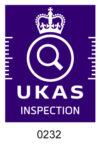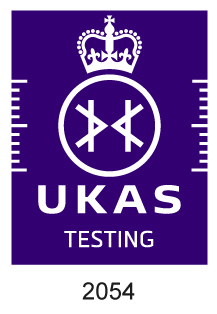Menu
close
**LATEST** New quantitative face fit services for RPE
Book in today

Indoor air monitoring involves the assessment and measurement of various air quality parameters within enclosed spaces, such as homes, offices, schools, and other indoor environments. The aim of indoor air monitoring is to evaluate the levels of pollutants, contaminants, and other factors that may impact indoor air quality and, subsequently, human health and comfort.
Monitoring for moulds and spores is an important component of indoor air quality assessments, particularly in buildings with moisture or dampness problems. Monitoring for moulds and spores involves initially visually assessing areas for mould growth, typically black growths to walls and surfaces, usually where the area is damp. We can also assess the presence and concentration of fungal organisms in indoor environments.
Indoor air monitoring involves the assessment and measurement of various air quality parameters within enclosed spaces, such as homes, offices, schools, and other indoor environments. The aim of indoor air monitoring is to evaluate the levels of pollutants, contaminants, and other factors that may impact indoor air quality and, subsequently, human health and comfort.
Key parameters commonly monitored in indoor air include:
Airborne Particulate Matter (PM): Particulate matter consists of tiny particles suspended in the air, which can include dust, pollen, mould spores, and other pollutants. Monitoring PM levels helps assess indoor air quality and potential health risks.
Volatile Organic Compounds (VOCs): VOCs are chemicals emitted as gases from various household products, building materials, and furnishings. Prolonged exposure to high levels of VOCs can lead to health issues. Monitoring VOC levels helps identify potential sources of indoor air pollution.
Carbon Dioxide (CO2): CO2 levels in indoor air can indicate ventilation effectiveness and occupancy levels. High CO2 concentrations may suggest inadequate ventilation, which can lead to discomfort and impaired cognitive function.
Carbon Monoxide (CO): CO is a colourless, odourless gas produced by incomplete combustion of fossil fuels. Monitoring CO levels is crucial for detecting potential sources of combustion-related pollution and preventing carbon monoxide poisoning.
Relative Humidity (RH): RH refers to the amount of moisture present in the air relative to the maximum amount it can hold at a given temperature. Monitoring RH helps maintain optimal indoor humidity levels to prevent mould growth, respiratory issues, and discomfort.
Temperature: Monitoring indoor temperature is essential for maintaining comfort and identifying potential issues with heating, ventilation, and air conditioning systems. Temperatures above 21°C often lead to dry eyes, itchy skin and lethargy when the RH is low.
Indoor air monitoring can be conducted using various instruments, including handheld meters, data loggers, and indoor air quality monitors equipped with sensors for detecting specific pollutants. Regular monitoring and analysis of indoor air quality data help identify sources of pollution, assess the effectiveness of ventilation systems, and implement measures to improve indoor air quality and occupant health and comfort.
Monitoring for moulds and spores involves initially visually assessing areas for mould growth, typically black growths to walls and surfaces, usually where the area is damp. We can also assess the presence and concentration of fungal organisms in indoor environments, by monitoring.
Sampling: Sampling is conducted using impactors, impingers, or spore traps to collect airborne particles onto a collection medium (agar gel).
In addition, surface sampling using swabs, tape lifts, or contact plates to collect fungal material from surfaces where mould growth is suspected can be carried out.
Analysis: The collected samples are then analysed in a laboratory to determine the concentration and types of fungal spores present. For viable counts, the samples are incubated on appropriate growth media to allow fungal colonies to develop. After an incubation period, fungal colonies are counted and identified based on their morphology and characteristics. This provides information on the types of fungi present and their abundance in the sampled environment.
Interpretation: High levels of fungal spores or the presence of certain types of moulds may indicate indoor air quality problems and potential health risks.
Recommendations: Based on the findings, recommendations may be provided for remediation or mitigation measures to address mould growth and improve indoor air quality. This may include measures such as moisture control, ventilation improvements, and cleaning or removal of mould-contaminated materials.
Exposure to harmful substances, elevated noise levels and prolonged use of vibration tools can cause serious ill-health over the longer term. If appropriate controls are not being used then employees will be at risk of serious illness such as cancer, asthma, skin diseases , hand-arm-vibration syndrome and deafness.
Occupational Hygiene is concerned with ‘worker health protection’. It is often described as the recognition, evaluation and control of exposure to workplace hazards. These include agents such as may include chemicals, dust, fumes, noise, radiation, vibration and extreme temperatures. chemical, physical and biological agents arising from workplace activity. The presence of these agents may affect the health and well-being of employees.
The Duty Holder is required by law to protect its employees and others from harm. The minimum you must do is:
1.Identify what could cause injury or illness (hazards)
2.Decide how likely it is that someone could be harmed and how seriously ( the risk)
3.Take action to eliminate the hazard, or if this isn’t possible, control the risk.
This chart highlights the possible health effects associated with different types of contaminants found in the workplace.
The law requires employers to adequately control exposure to substances in the workplace that cause ill health. This is the Control of Substances Hazardous to Health Regulations 2002 (COSHH). In addition, organisations need to work within the legal limits for the amount of substances that can be present in the workplace air. There are also regulations for the control of: Noise , Vibration and Local Exhaust Ventilation. You can view a range of HSE guidance relating to Occupational Hygiene at https://www.hse.gov.uk/pubns/books/index-legal-ref.htm
BOHS is a membership organisation that promotes Occupational Hygiene as the science-based discipline for identifying, assessing and controlling exposure to harmful substances in the workplace. It is the only Occupational Hygiene organisation to be awarded a Royal Charter in recognition of its ‘ unique and pre-eminent role as the leading authority in occupational disease prevention’. BOHS is also a UK based examining board for occupational hygiene qualifications

